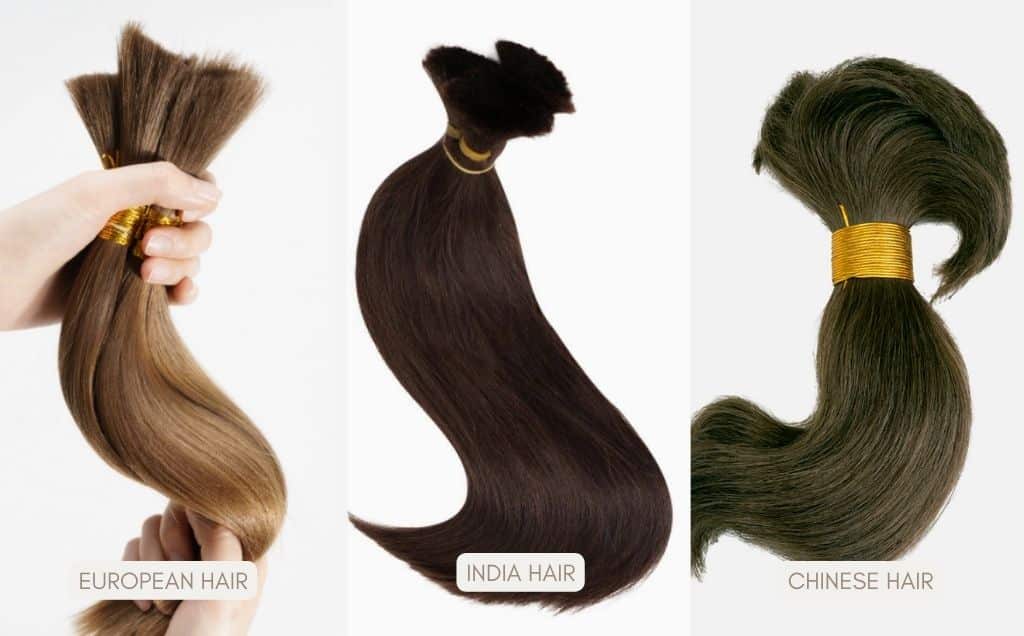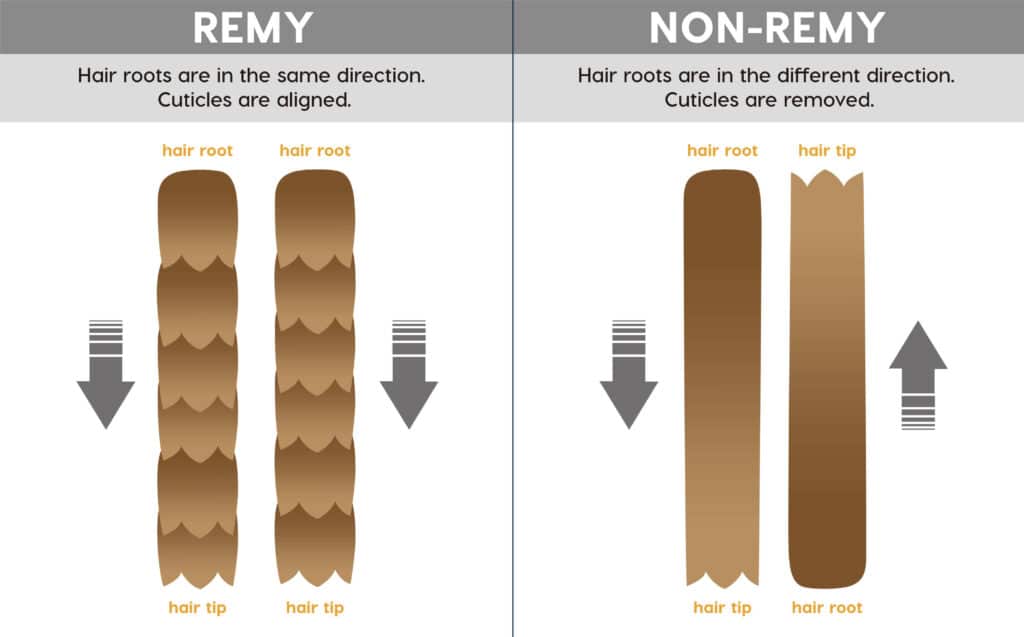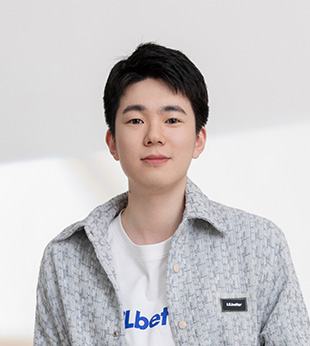Often, clients who are new to hair systems inquire about the expected lifespan of hair systems. This is a crucial question to address before making a purchase decision. Understanding the longevity of a hair system is not only essential for evaluating its overall value but also for planning potential backups and budgeting appropriately.
In this article, we aim to shed light on the typical lifespan of various hair systems, explore the factors that impact their durability, and provide insights from hair system experts on effective strategies to maximize their longevity.

How Long Do Hair Systems Last?
Hair systems can last from a month to a year mainly based on different base materials. You can refer to the lifespan chart below for the lifespan of different bases.
Base Material | Lifespan |
Skin 0.03mm | Around 4 Weeks |
Skin 0.06mm | 2-3 Months |
Skin 0.08mm | 3-4 Months |
Skin 0.1mm | 3-6 Months |
Swiss Lace | 1-2 Months |
French Lace | 3-4 Months |
Monofilament | 6-12 Months |
- Skin hair systems have a base of see-through poly skin. Their bases come in various thicknesses. The most commonly utilized thicknesses are 0.03mm (ultra-thin), 0.06mm, 0.08mm, and 0.1mm. The thicker, the longer it can last.
- Lace hair systems are mainly classified into Swiss lace and French lace. Swiss lace is more breathable and looks more realistic compared to French lace ones. It is more delicate and typically lasts shorter.
- Monofilament hair system is the most durable type among all hair systems. And it can can last 6–12 months or even longer with proper care.
What are the Factors that Highly Influence How Long a Hair System Last?
Other factors also impact the lifespan of a toupee or hair system. Taking good note of them, the toupee shall last longer than suggested.
1. Hair Coloring/Bleaching
Hair coloring and bleaching will harm the hair system just like they do to our natural hair. They will dehydrate the hair, causing it to become more brittle. They will shorten the lifespan of the hair system especially when you do it improperly. If you must dye or bleach it, do it sporadically and follow the correct procedures.
2. Hair Type
It’s commonly known that Chinese hair is the most robust hair type, ideal for multiple styling and coloring options. European hair is tender, soft, and the most delicate among all hair types. Indian hair looks and feels soft like European like but stronger, and is the most commonly used hair type for most hairpieces.

Related: Comparison Between European, Indian, and Chinese Hair
3. Hair Quality: Virgin, Remy, Non-Remy Hair
How long do toupees last, considering hair quality? Human hair types used for toupees are mainly virgin hair, Remy hair, and non-Remy hair.
Virgin Hair: Virgin hair refers to unprocessed human hair cut directly from the donor’s head and has intact cuticles.
Remy Hair: Similar to Virgin hair, Remy hair also has intact cuticles. However, Remy hair is processed or dyed and may not be as durable as Virgin hair.
Non-Remy Hair: Non-Remy hair is just randomly collected human hair and isn’t necessarily organized in the same direction. To avoid tangling, its cuticles must be stripped. Without the protection of cuticles, the hair wouldn’t last as long as virgin hair and quality Remy hair.

For a more detailed comparison, check out Virgin Hair vs. Remy Hair vs. Non-Remy Hair: What are the Differences?
4. Ventilation Method
Ventilation methods is another factor that will influence how long the hair system lasts. A robust ventilation method guarantees a lasting bond.
Lace and mono bases require hair knotting. It’s worth noting that certain materials may not suit high hair densities, potentially causing some delicate lace bases to tear.
For skin hair systems, we typically employ injected or v-looped hair. These methods create a knotless, natural scalp-like appearance. Yet, v-looped and injected hair can be more susceptible to shedding than knotted ventilation methods.
Read Ventilation on Different Base Types for more detailed guidance on ventilation.
Expert’s Tips to Extend Hair System Lifespan
Did you know proper caring techniques must be applied to maximize the lifespan of a toupee? With good care, many hair systems can last up to a year or over! Here are useful tips to maximize the lifespan of hair systems according to hair system experts at New Times Hair.
1. Using Right Glue or Adhesives
Choose the right glue or bondings for the hair system can make it easier to remove and clean the hair system, making it less likely to destroy the hair system and extend its lifespan.
Glue suits skin hair systems, as tape may tear the skin. On the flip side, lace or mono hair systems prefer tape, as glue could seep through and wreak havoc on the roots.
Related: Hair System Tape vs. Glue.
2. Proper Revoval Is Key
Toupees are most vulnerable during removal. Go gently, and never be stingy with the use of adhesive remover. For more details, watch and finish watching our detailed video on hairpiece removal.
3. Washing Properly, Regularly, But not too Frequently
Correct hair-washing techniques and products must be employed. Hair wash is a must but at most twice a week. Sulfate-containing shampoo and products must be avoided.
4. Never Comb or Brush the Hair When Wet
Avoid wet hair combing or brushing, especially for skin hair systems. Wet hair weakens the bond, making it easy to pull strands.
This is how you should wash hairpieces without worrying about hair shedding.
Related: Why Is My Hair Wig Shedding and How to Stop It Effectively?“
5. Keep More than One Hair System
Keep a few hair systems in hand. Rotate among them. This reduces wear, provided the unused pieces are stored in a clean, dry space. It’s also wise to let the hairpiece air dry between uses.
6. Brush, Untangling the Hair Gently
How long do toupees last, with or without tangling? To make it last, comb or brush it often, detangling it, but do it gently. For hair that is severely tangled, consider giving it a proper wash as part of the untangling process.
Related: How to Untangle a Matted Hairpiece the Right Way.
7. Don’t Overuse the Hairdryer on the Hair System
Minimize the hairdryer use, as doing it too frequently dehydrates the hair or even burns it, leading to breakage. Air-dry the hair whenever you can. If you must use a hairdryer, do it occasionally, use heat protectants, and keep the dryer on low heat.
Conclusion
The lifespan of toupees, or hairpieces, varies depending on the base material, hair type, and maintenance. “How long do toupees last?” encompasses considerations beyond how long they stay glued on. Generally, ultra-thin skin toupees last 3–4 weeks, while lace ones last 1-4 months. Monofilament toupees boast the most extended lifespan, stretching to 6–12 months with care.
Hair type also impacts longevity, with Chinese hair being durable. Maintenance practices such as using quality adhesives, gentle removal, and proper washing play vital roles. By understanding these factors and adhering to a routine, toupee wearers can maximize their lifespan.
Click here to view our complete collection of premium toupees









